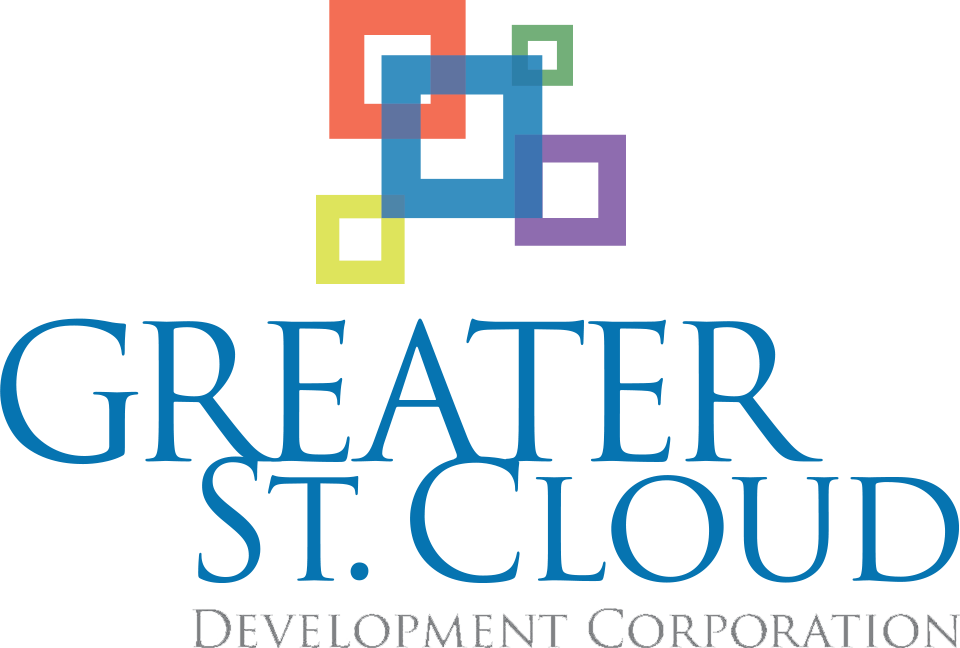Guide to Hiring International Students
There are many benefits to having an international student as an intern. Not only does a variety of students provide a larger diversity in ideas and perspectives at your organization, but also increases competitiveness throughout your industry. Please use this resource guide to assist you and your organization to be more informed about hiring this specific population of students.
Work Authorization
A common misconception about international students is that they are not allowed to work—that is simply not true! In fact, a benefit of the F-1 and J-1 status is that most students may apply for work authorization to accept a variety of employment opportunities. Best of all, it is possible for students to begin working without their employers having to provide visa sponsorship. However, some work authorization types do require an application to the government or the student’s international office at their school.
Two types of work authorization, F-1 and J-1, are detailed below.
F-1 Status
Non-immigrant students working towards a specific degree (e.g. BA, MA, PhD, MD) and some exchange programs. Documents for these students include form I-20, F-1 visa, I-94 card or Electronic I-94 record, and Admission Stamp.
J-1 Student Status
Non-immigrant status used for international exchange. Documents for these students include form DS-2019, J-1 visa, I-94 card or Electronic I-94 record and Admission stamp.
Three types of training:
- Optional Practical Training (OPT) F-1
- Curricular Practical Training (CPT) F-1
- Academic Training (AT) J-1
F-1 Optional Practical Training (OPT)
OPT is a type of F-1 off campus work authorization for degree-seeking students who wish to gain experience in jobs directly related to their major area of study. OPT is more frequently used for employment opportunities after graduation (post-completion OPT) but it can be obtained prior to graduation (pre-completion OPT). Use of OPT is counted cumulatively. Only 12 total months of standard OPT are available, and OPT done before a degree is completed will count against that 12-month total and reduce time available after graduation.
Other Characteristics of OPT:
- No employer sponsorship needed.
- Students must be enrolled for one year before applying for OPT.
- OPT may be used before or after a student completes their degree.
- OPT acquired before degree completion is referred to as Pre-completion OPT.
- OPT acquired after degree completion is referred to as Post-completion OPT.
- Application is initiated by the student, is authorized by the U.S. Citizenship and Immigration Services (USCIS) and takes 3-4 months to be approved. USCIS does not expedite applications.
- Allows part-time and full-time work; students on Post-completion OPT are required to work at least 20 hours per week.
- Eligible students have a maximum of 12 months of OPT; students who have earned a degree in a STEM-designated field may be eligible for an additional 24 months under the OPT STEM Extension.
- Job offer is NOT required for application.
- Students must work in a job that is directly related to their degree program.
Employer Responsibilities
Employers can choose to have little to no involvement with the OPT application process, however, students are required to report general employment information their university’s international affairs office and may request an Employment Verification Letter for travel purposes. STEM OPT carries additional employer requirements.
Approval
OPT approval comes in the form of an Employment Authorization Document (EAD). This card will state the specific start and end dates for OPT. Examples Below.
F-1 Curricular Practical Training (CPT)
CPT is a type of F-1 work authorization that allows students to work off campus in cases where the employment will fulfill 1) a requirement of the student’s degree program, 2) the requirement of a student’s University course, or 3) is part of an established co-operative educational agreement between the a University’s department and the employer. CPT eligibility requirements are quite strict and cannot be adjusted based on a student’s particular circumstances.
Other Characteristics of CPT:
- No employer sponsorship needed, but the application does require the employer to provide a CPT letter. See employer responsibilities for more information.
- Students must be enrolled full-time for one academic year before they can apply
- CPT can only be used before a student completes their degree/graduates.
- Application is initiated by the student, is processed by the student’s higher education institution and takes approximately 1 week to approve.
- Allows part-time and full-time work.
- Student must have a job offer before they can apply.
Employer Responsibilities
When students apply for CPT, they will be required to submit a CPT employer letter. This letter is crucial to authorizing CPT and we strongly recommend that employers use the CPT employer letter template to make sure all required information is included and prevent CPT processing delays. This template, provided by the University of Chicago, can be changed for based on the student’s college or university.
Approval
Once all documents are received, it will take approximately 1 week for OIA to authorize the student’s CPT. CPT Approval comes in the form of a new form I-20 which will detail the employment authorization on page 2. The form I-20 may be copied for Human Resources purposes however, the student is required to carry the original.
J – 1 Academic Training
Academic Training (AT) is an off-campus authorization that allows J-1 students to work in jobs and internships that are directly related to their degree programs. Students have to work with their academic departments and their school’s international office to apply for AT.
Other characteristics of Academic Training:
- No employer sponsorship needed, but the application will require a letter from the employer. See Employer Responsibilities for more information.
- Student must have a job offer before they can apply.
- AT may be used before or after a student completes their degree.
- AT acquired before degree completion is referred to as Pre-completion Academic Training
- AT acquired after degree completion is referred to as Post-completion Academic Training.
- Application is initiated by the student, is processed by the student’s University and takes approximately 1 week to approve.
- Allows part-time and full-time work.
Post-completion Academic Training requires that the student be compensated for their work. If they will not be compensated, they should contact their University to discuss other ways to prove financial ability to remain in the U.S. while on AT.
Doctoral students may be eligible for up to 36 months of authorization, while bachelors and masters students are eligible for up to 18 months. Exchange students are eligible for AT corresponding to the amount of time in their program (e.g., 90 days of study = 90 days of AT eligibility).
Employer Responsibilities
When students apply for AT, they will be required to submit a “job offer letter”. This letter is crucial to authorizing AT and we strongly recommend that employers use the AT employer letter template to make sure all required information is included and prevent AT processing delays.
Approval
AT approval comes in the form of a new DS-2019 which will detail the employment authorization on the first page. The form DS-2019 may be copied for Human Resources purposes however, the student is required to carry the original. Approval usually comes in a week, dependent on the student’s college or University.
IMPORTANT: Students are NOT permitted to begin their off-campus employment until their work authorization has been approved and start date has been reached. Working even one day without proper work authorization can have severe consequences on the student’s immigration status and on the company.
Created by GSDC using information from the University of Chicago, San Francisco State University, and the University of Dayton.
Frequently Asked Questions
- Isn’t it illegal to hire international students because they do not have a green card?
No. Federal regulations permit the employment of international students on F-1 and J-1 visas within certain limits. These visas allow students to work in jobs related to their major field of study. F-1 students can work on “practical training.” J-I students may work on “academic training.” Both groups of students can work on campus in student positions.
- Even if it’s legal to hire international students, won’t it cost a lot of money and involve a lot of paperwork?
No. The only cost to the employer hiring international students is the time and effort to interview and select the best candidate for the job. The international student office handles the paperwork involved in securing the work authorization for F-1 and J-1 students. In fact, a company may save money by hiring international students because the majority of them are exempt from Social Security (FICA) and Medicare tax requirements. The only paperwork for the employer is providing a letter indicating the job offer for the authorization. Of course, employers must complete the standard paperwork related to their hiring process such as Form I-9, as with any new hire.
- How long can international students work for me (in the United States with their student visa)?
F-1 students are eligible for curricular practical training (12 months limit to retain OPT eligibility) before completing their studies, as well as an additional 12 months of optional practical training, either before or following graduation, or a combination of the two. Certain STEM majors are eligible for a 24 month extension of OPT bringing their total time OPT to 36 months. Students with a J-1 visa are usually eligible to work up to 18 months following graduation. They may also be eligible to work part-time during their program of study.
- Don’t international students need work authorization before I can hire them?
No. International students must have the work authorization before they begin actual employment, but not before they are offered employment. Many F-1 students will be in the process of obtaining work authorization while they are interviewing for employment. Students can give employers a reasonable estimate of when they expect to receive work authorization. J-1 students must have a written job offer in order to apply for work authorization.
- How long can international students work in the United States with their student visa?
F-1 students are eligible for curricular practical training before completing their studies, as well as an additional 12 months of optional practical training, either before or following graduation, or a combination of the two. However, if they work full-time for one year or more of curricular practical training, they are not eligible for Optional Practical Training.
- Doesn’t an employer have to prove that international students are not taking jobs from a qualified American?
No. American employers are not required to document that a citizen of another country did not take a job from a qualified American if that person is working under an F-1, J-1 or H-1B visa. Employers must document that they did not turn down a qualified American applicant for the position only when they wish to hire foreign citizens on a permanent basis and sponsor them for a permanent resident status (“green card”).
Created by GSDC using information from the University of Chicago, San Francisco State University, and the University of Dayton.

